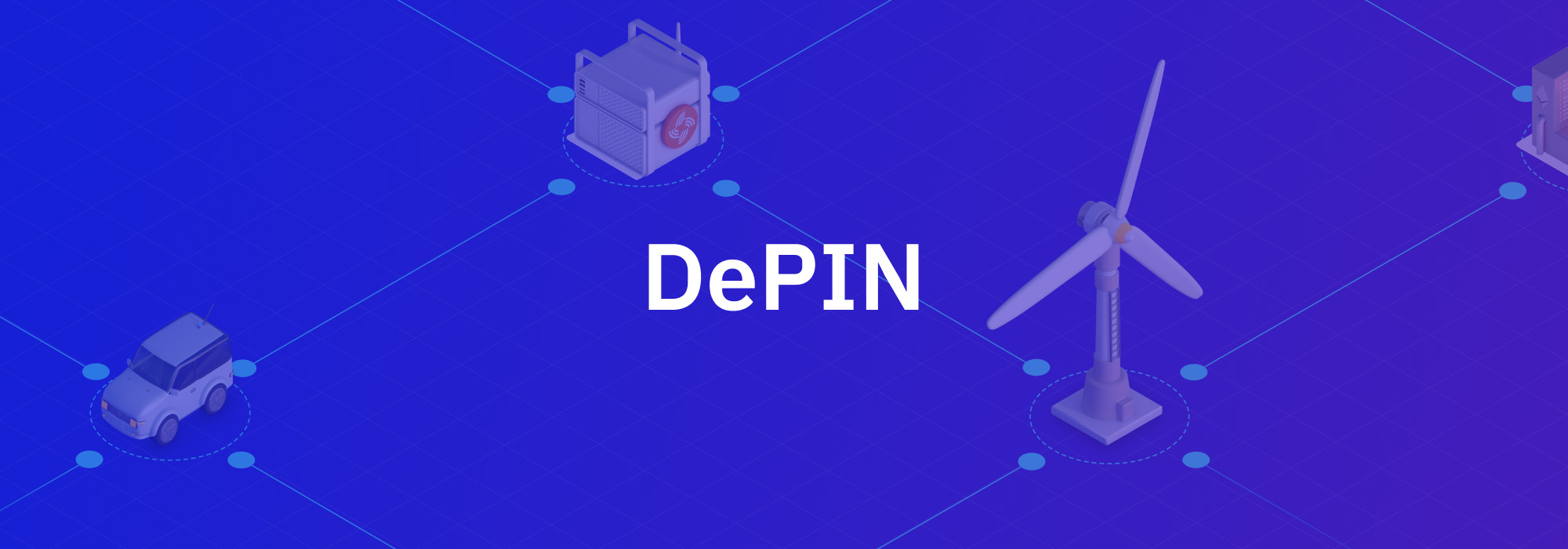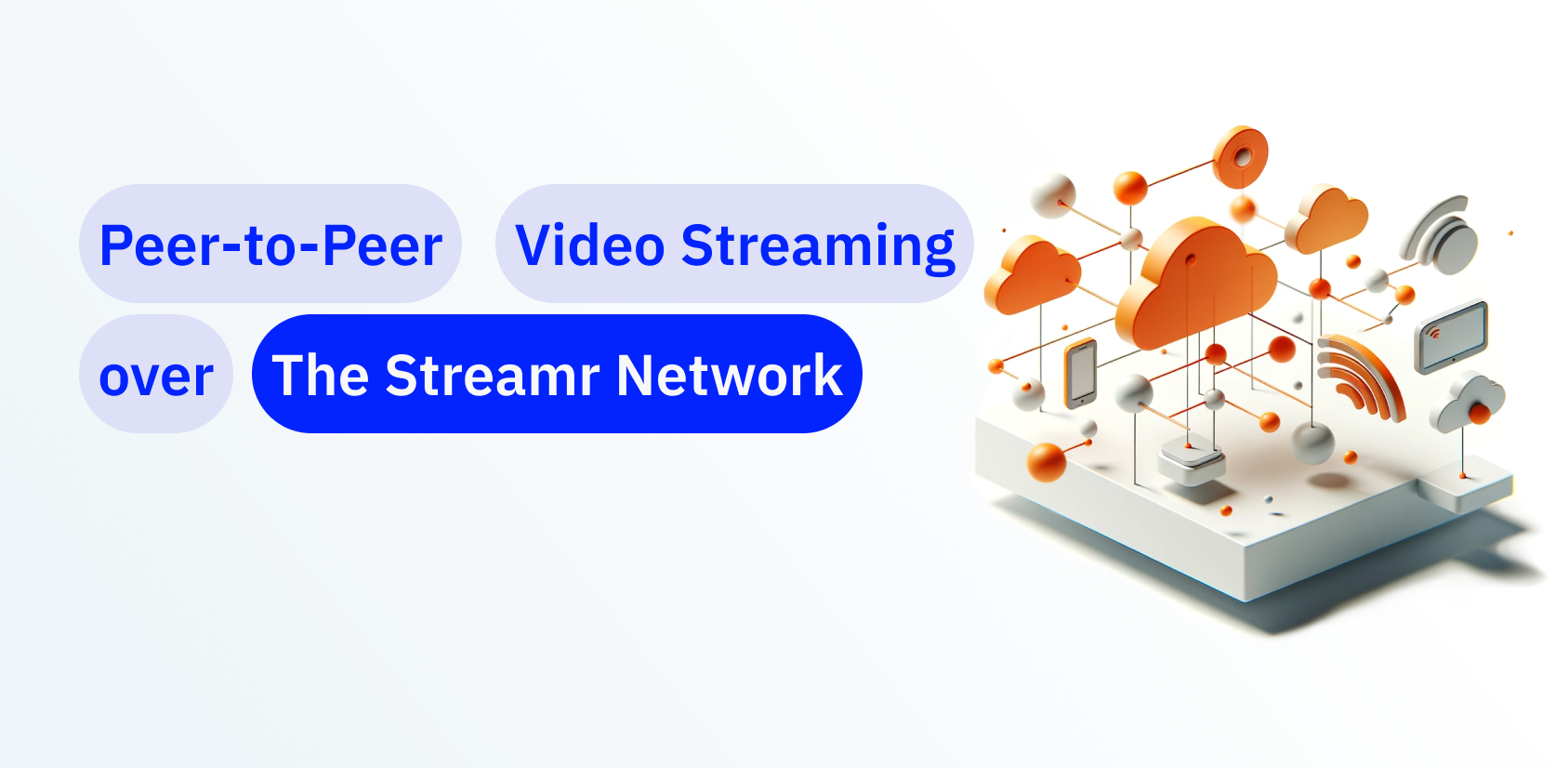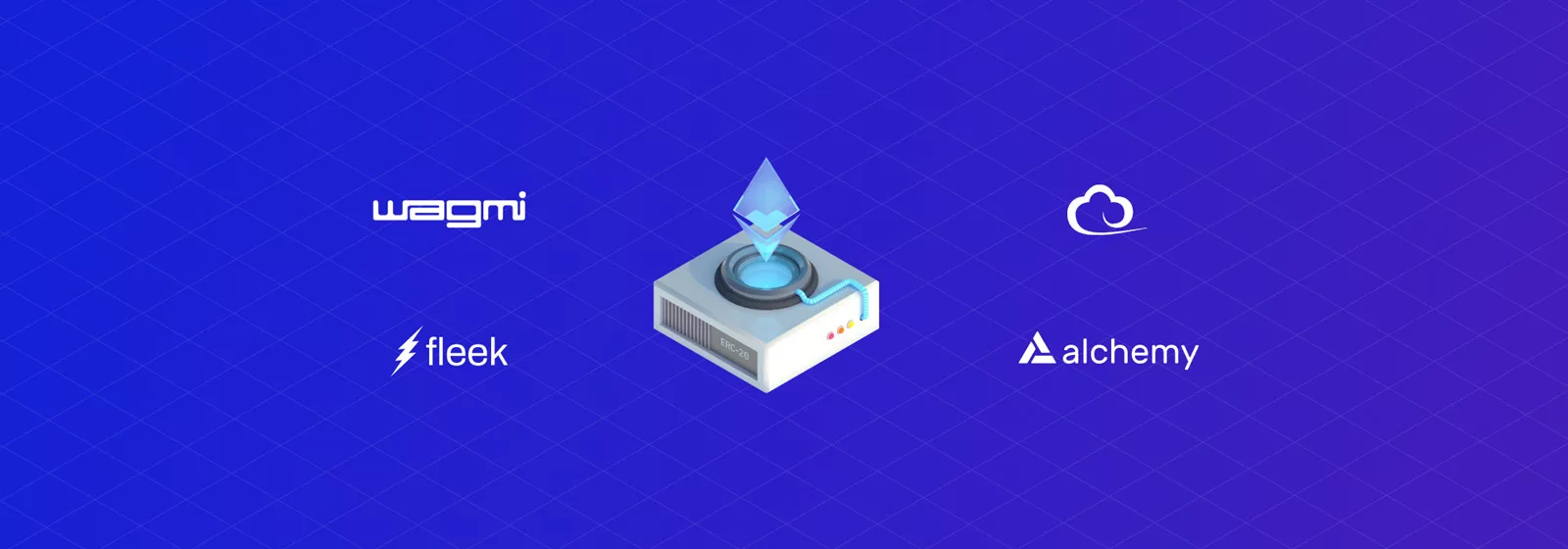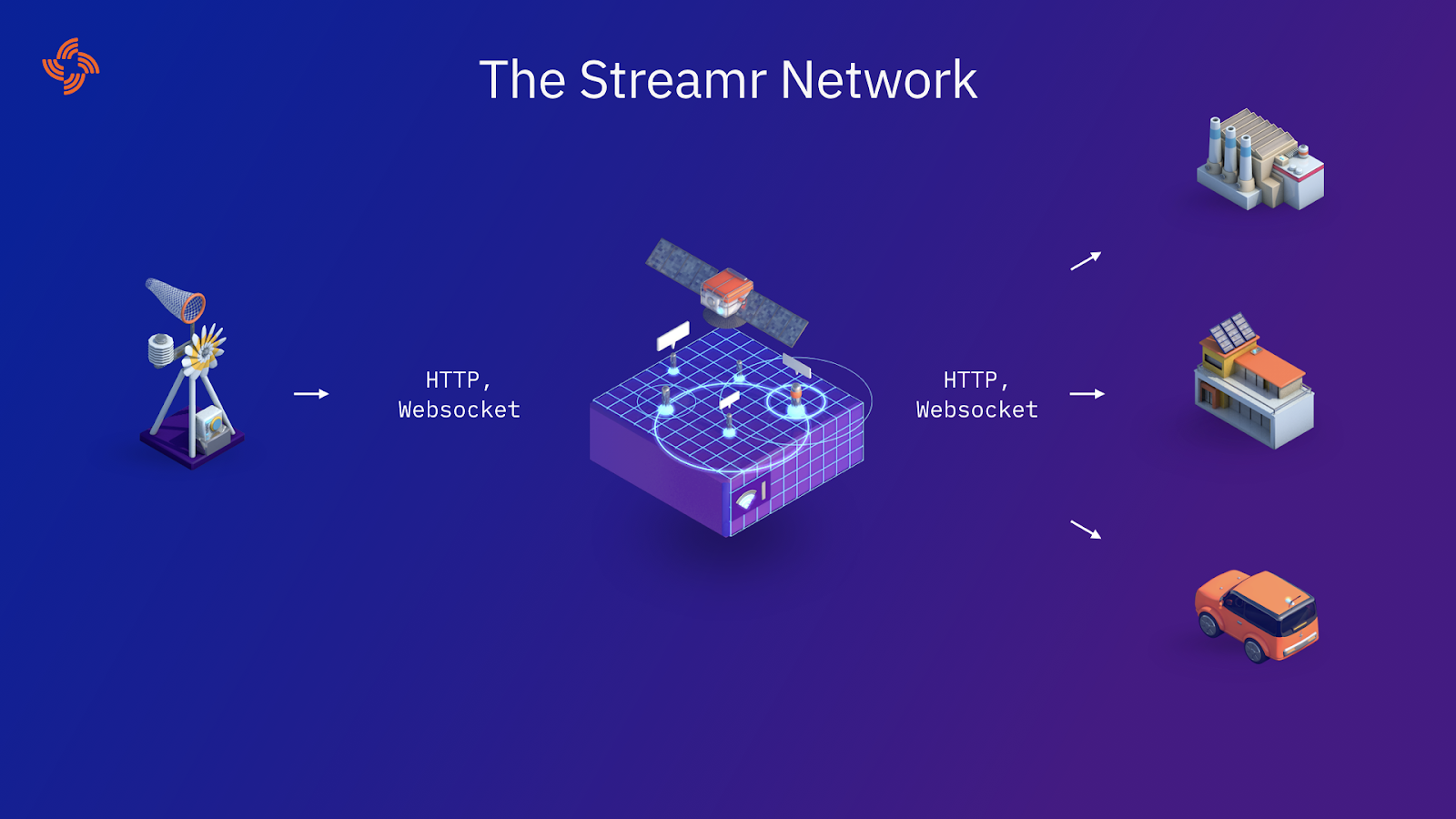Whenever us nerds get excited about a new technology – like personal computers, the internet or smartphones – the public dutifully yells, “WHERE ARE THE USE CASES”?
And so it goes with DePIN. To answer that question, this article will lay out what it is, why people are excited about it, and what unique opportunities it unlocks for the economy and society.
DePIN stands for Decentralized Physical Infrastructure Networks. Yep, now you see why we use an acronym.
In normie terms, DePIN takes the work that is now done in the data centers of Google, Amazon, and Microsoft, and moves that work to the devices of non-technical people all over the planet. The benefits of this are huge. It removes trust from misaligned corporate actors, returns economic gains back to individuals, and overall increases reliability, market fit, and innovation across our entire infrastructure.
DePIN is not public or private infrastructure. It’s something new. It’s owned and operated by the people who need it and use it — by all of us. Though DePIN projects are usually bootstrapped by profit seeking startups, their user-owned model manifests something that lives beyond the ups and downs of their creators, and potentially outlives them entirely.
Table of Contents
Why DePIN and Why Now? How Did We Get Here?
It’s important to position DePIN in relation to macro trends to understand what’s ahead of us. We’ve hit the end of a convergence cycle (centralization via Google, Facebook, Amazon) and we are now beginning a divergent cycle (decentralization via blockchain, web3, and DePIN). This is a well researched phenomena outlined in books like The Master Switch, and we can use it to get an idea of what’s on the horizon for DePIN and web3. It goes like this.
When a disruptive technology emerges, it is usually decentralized. No one sees the value in it yet so only the enthusiasts are playing with it. Think of ham radio back before TV stations, or BBS’s and usenet groups before the internet.
At this phase, there are no standards and the use cases aren’t fully understood. Over time, however, people start figuring out how the new tech could be economically successful. Mind share and capital start consolidating around a few versions of the tech, and the companies that pioneer them — like individual radio tinkerers turning into radio stations, or CompuServe and AOL evolving out of the smaller homegrown digital networks.
Those few versions of the tech battle it out, with many consolidating and merging for strategic advantage. As the user experience of the technology gets better, the amount of options dwindles. The tech becomes more popular, a fixture of everyday life. A few of the winners up to this point see monopoly opportunities and consolidation deepens. Ham radio and digital networks both eventually feed into AOL Time Warner and Comcast. (Let’s leave the regulation stage out of it for now, though that is crucial to understanding this process, and it is imminent for web3.)
And so here we are at the doorstep of a new phase of disruption. Centralization of the internet and digital services has ceased to provide enough value to warrant its many downsides. And new tech is allowing us to solve bigger and better problems without relying on monopolies, mostly through decentralization.
DePIN is among the most underappreciated sectors of this web3 movement. So let’s look at the potential of this relatively new paradigm to see the categories that it’s currently revolutionizing.
Disclaimer
While we’re bullish on DePIN and see mostly good actors in the space, these technologies are not immune to poor management or outright scams. For example, Pollen recently showed us that the companies behind these efforts don’t always do what they say, or do what the community assumes they will do. Our mention of any players in this space are not an endorsement and you should Do Your Own Research™ before taking any actions based on this information.
Areas of DePIN Disruption
The general DePIN playbook goes like this.
- Raise capital
- Build a tokenized network, putting aside tokens for the builders
- Distribute the token to enthusiasts as reward for building out the network and using it
- Speculators and outside investors show up and help drive up the value of the rewards
- Achieve product market fit so that new users come for the utility, not the speculation
- Network effects compound, new economies are built … It’s alive!
- Builders enrich themselves by breathing value into the token, but the community is also left with their own network to steward as they wish
Each of these steps is hugely complex and precarious, but that’s generally the idea. Many of the projects listed here are at the Product Market Fit stage, but others are further behind or ahead. We’ll try to call this out as much as we can.
These categories are squishy, and many projects could be considered to span multiple categories. We’ve clumped them together with the goal of providing clarity to people who are unfamiliar with the space or these projects.
Let’s dive in.
Internet Service Providers (ISPs)
Old way:
Get a free router from the ISP and then pay out the nose in monthly fees
DePIN:
Pay for your own router, get paid back each month as people use your extra bandwidth.
Why now:
Internet service is an obvious win for DePIN. Before DePIN’s current level of maturity, bootstrapping a community network that compensated everyone with a router proportional to their contributed bandwidth … well, it was as hard as it sounds. Now a few key companies have deployed software that makes it easy. Some allow you to start your own network, like Althea. Others are building a single global network.
This is the trend in almost every category of physical infrastructure: Lower the barrier to entry so that average people can own and operate shared resources without any central authority or gatekeeper to pay or appease.
Players:
- Althea
A combination of networking and payments software that compensates each node for how much bandwidth they provide. - Magic
Magic claims to be building a single global network that offers internet connectivity through existing devices. Users pay the providers closest to them for connectivity right when they’re using it.
Automotive
Old way: Insurance companies give you an insultingly small discount on your car insurance if you let them gobble up all the valuable data you and your car produce.
DePIN: Capture your vehicle data for yourself and efficiently sell it to a much wider variety of buyers, such as app developers and researchers.
Why now:
New tokenomics allow users and builders to share in the upside of vehicle data, which makes buying a new hardware device to capture data from your car worthwhile. DIMO, for example, rewards users who share their data with $DIMO tokens, which gives holders voting power on how the network is run. Also, data consumers must purchase $DIMO to access any of the vehicle data, increasing its utility.
In addition to these tokenomics, decentralized data networks like Streamr are finally coming to maturity. This means that no intermediary like Amazon or Google needs to be trusted, or paid, to steward the data between provider and consumer. Only the data provider and data consumer can access the data, yet it is still distributed globally in real-time.
Players
- DIMO
Plug the DIMO device into your car to give it superpowers. Get health and valuation insights, and share data for rewards. - Hivemapper
Use a dashcam to map the roads while you drive. In return, you get HONEY tokens that can be used in a variety of ways. - MapMetrics
Get a Special Position Tracker (SPT) and get rewards for your vehicle location. Can even be used with a bike. - Soarchain
Turn your vehicle into a node on a custom wireless network that connects vehicles to developers. Focused on providing data for traffic safety and city governments.
Mobility
Old way:
Riders get convenience and Uber and Lyft get the profits. Drivers get the shaft. Competition gets squashed and monopoly or duopoly pricing sets in.
DePIN:
Drivers and riders get fairer prices and payments, plus ownership and voting power in the networks. Competitive markets keep prices low for riders without stiffing drivers.
Why now:
Shared ownership models enabled by tokens finally provide a way to break the network effects of Uber and Lyft. With a shared, permissionless protocol, many independent ride sharing services and businesses can be launched without having to build their own user base. Services can now compete on features and user satisfaction rather than paying employees less or raising prices.
Players
- Drife
Decouples the ride-hailing process from the ride provider (driver). Allows new businesses to build on a robust ride-hailing platform and compete on other features. - Teleport
Uses TRIP protocol to enable drivers and riders to own and govern their own ride-sharing network. - DIMO
Another mention of DIMO here as they potentially move into the mobility space and enable its use-cases. Watch this video about DIMO and decentralized rideshare.
Sensor Networks
Old way:
Governments, scientists, and researchers deploy their own sensors and networks to achieve monitoring goals.
DePIN:
Anyone can buy and install sensors and then contribute their data to global networks for rewards. Governments and researchers then pay a fraction of their previous costs to get better data.
Why now:
As digital as our lives and world have become, our need for data still far outstrips supply. A single entity, like a government, deploying its own network of sensors to achieve monitoring goals just doesn’t scale. DePIN allows people across the world to setup their own sensors that data consumers can then tap into. This bottom-up approach promises to be far more efficient, cost-effective, and scalable.
Our current inflection point comes from the convergence of crypto currency, better hardware, and the public’s familiarity with sensors in their daily lives. Many people are already buying smart home devices without any promise of rewards. DePIN turns these same devices into potential profit streams. Because of this, many people in the data collection space finally see a clear path to satisfying their exponential data needs.
Players
- WeatherXM
Rewards weather station owners for contributing their data. Provides a weather oracle for use in smart contracts. - Spexigon
Rewards drone pilots for capturing high resolution imagery. - 2blox
Uses an AI-powered sensor to count traffic in front of your home. Sells traffic data and passes rewards on to sensor owners. - PlanetWatch
Runs a network of air quality sensors and rewards sensor owners. - Roam
Uses data collected from users’ phones to verify and report cell reception and network strength data. Rewards data collectors for their contribution.
5G Networks
Old way:
Find the carrier with the best coverage in your area and hope they have reasonable prices. If you’re in a remote location, good luck, there’s no reason for them to build a cell tower out there just for you.
DePIN:
Anyone can buy equipment and become part of the network, allowing small and remote communities to coordinate and build out coverage themselves. Router owners get paid for providing bandwidth to other network users.
Why now:
Similar to Internet Service Providers, maturity of crypto currencies and decentralized networking software has finally enabled user owned and operated cell networks. These networks rely on incentives and decentralization to build out a more equitable and expansive coverage distribution.
People in underserved areas are incentivized to buy and run a router, which can potentially pay for itself and provide income. Much like investor speculation can spur the expansion of technology into underserved markets, so does the speculative premium on tokens like Helium’s HNT allow for the network to build out its initial base in order to become widely used.
Players
- Helium
Anyone can buy a Helium router with a 5G antenna and bolster coverage in their area. Router owners get paid when people use the network. - XNET
Aims to be competitive with big name mobile carriers. XNET Foundation governed by a DAO. - Karrier One
Runs its own chain based on Polygon Supernets and is governed by a DAO. Early deployment in Canada’s Indigenous community in Osoyoos British Columbia.
Bluetooth and IoT Networks
Old way:
Pay a provider of a low power network in your area to connect your devices, or run your own hub and hook it to your internet connection. If your devices are remote or spread out, good luck to you.
DePIN:
Pay people for connectivity in your area who are already running hardware. Get paid yourself for providing connectivity to others. In theory this incentivizes coverage wherever is needed, including remote areas.
Why now:
There has been a fierce battle for IoT in the past decade. Competing standards, money grabs, and general confusion created too many headwinds for many promising projects. The graveyard of IoT companies is vast. Now, however, inroads made by Nest and Amazon’s Echo finally seem to be tipping the momentum of IoT into the mainstream. On top of that, every industry seems to need more real-time data to leverage automations and AI insights. Together, this means our planet is being flooded with sensors and devices that are low powered … which means no WiFi or GPS.
Projects like Helium and Nodle are betting that a user-operated, tokenized network presents the best option to connect all of these devices. If a new area needs more coverage, the market incentivizes individuals to buy hardware to service it. Some projects have the added benefit of paying you for resources you didn’t even realize you were providing to bigger companies like Apple, which uses your iPhone while you’re out and about to provide connectivity for other people’s Airtags in addition to your own.
The alternative of some government or business deploying enough infrastructure to service all these needs in real-time seems extremely unlikely. Many people are betting on the organic growth of user-owned networks to fill in the nooks and crannies that big tech has ignored.
Players
- Nodle
Use your phone to detect nearby Bluetooth and IoT devices and earn rewards. - Helium
Helium began by building a LoRaWAN network for IoT before moving into 5G as well.
Energy Networks
Old way:
Pay the power company for electricity. Some utilities offer green energy sources as they become available. Consumers trust that their energy is coming from where the utility claims.
DePIN:
Generate your own power and sell the excess for profit. Consume power from sources that you choose without trusting an intermediary.
Why now:
DePIN is all about unlocking shared ownership models through decentralization and tokenomics, and energy is no different. Just as home routers create an excess of bandwidth that potentially can be shared, so do home solar panels. As panels become more prevalent, it makes sense that networks would form to allow providers and consumers to find each other.
Solar power seems to be finally reaching an efficiency and distribution that enables economies of scale. Early in the adoption curve, high solar prices meant adoption was more due to principles or ethics rather than practicality. Now, a combination of rising gas prices, lowering solar equipment prices, and continued government subsidies means that solar is actually competitive on its own merits. Since energy costs are hard to estimate given world events like the Russian invasion of Ukraine, and murky adherence to green energy policies, we won’t make any objective claims about how solar is the cheapest energy. Solar does seem to be having a moment, however, and it’s hard to see adoption slowing or shrinking anytime soon.
Players
- Arkreen
Share the data from your PV panels and get rewarded.
Cloud Computing
Old way:
Pay Amazon AWS, Microsoft Azure, or Google for resources in the giant data centers.
DePIN:
Resource owners bid for your business and you interface directly with them.
Why now:
While computers keep following Moore’s law – getting faster and smaller – the prices of cloud services don’t seem to be coming down as quickly as they should. Meanwhile it seems everyone and their grandmother needs cloud computing resources.
This market inefficiency has created a huge opportunity for user owned networks to provide these services and disrupt the network effects of the entrenched legacy services. Again, the magic of tokens allows consumers to align with service providers directly without paying a premium.
Players
- Akash
A cloud provider built and designed as a public utility. It runs on a blockchain that uses the Cosmos SDK. - Render
A network of GPUs that can process computer graphics workloads on demand. - Aleph
Provides private, always-on VMs that can use volumes backed by IPFS for immutable storage. - 4EVERLAND
Supports a variety of networks and services, including Arweave and DFINITY. - Cudos
A Cosmos SDK blockchain that allows access to computing resources permissionlessly via smart contracts. - Golem
One of the OG crypto projects. Golem was already getting people excited about decentralized compute way back in 2014. - iExec
Uses confidential computing for a computing resource marketplace.
Data Networks
Old way:
Data distribution is housed within each cloud company’s infrastructure and offered as a paid service according to requirements. Revenue goes to the cloud service provider, who acts as a single point of failure due to the centralized nature of the service…
DePIN:
Each service is decoupled to its own decentralized network so you only use what you need and only pay for what you use. Value accrues to node runners instead of tech companies.
Why now:
In addition to decentralization, web3 is also about unbundling. What we have previously thought of as a single service may become several modular services. Once unbundled, they become composable, allowing developers to build experiences that couldn’t exist before due to the impossibility of combining a portion of one cloud company’s offering with one from a different company.
With smart contracts, for example, developers are no longer forced to think in terms of the client and server paradigm. But doing so reveals difficulties in functions that used to be invisible, such as data transport. Streamr, for example, is stepping in to make global Pub/Sub operations and permissions composable so that anyone can build “X to Earn” use cases using their distributed, performant, and censorship resistant network. Ceramic, on the other hand, democratizes shared data schemas to allow developers to build experiences without actually custodying user data.
Players
- Streamr
A global, distributed network for real-time data. Send data between devices and manage permissions to make sure data is only seen by its intended recipients. - Ceramic
Like one big, communal database, Ceramic makes data interoperable between apps that may not even know of each other’s existence. Users win since they can bring their own data from app to app.
- Lit
When you have open databases, key management and permissions become even more important. Lit handles the complexity of encryption and access control to enable this new paradigm of data custody.
Cloud Storage
Old way:
Choose a provider like Google Drive, OneDrive, Dropbox, IDrive, etc. Often locked in due to the ecosystem of devices. Be prepared to migrate to a new provider at any moment due to cost increases, shutdown, or policy changes.
DePIN:
Use the global network of civilian storage providers called the Interplanetary File System. Pay more but get more control and peace of mind. Storage outlives any company but requires more thought and planning.
Why now:
Our personal histories are becoming more and more synonymous with data. The photos we take, the text we compose, the conversations we have. A lot of it must be stored in the cloud for us to have access to it anywhere we go. This means we are at the mercy of private companies to stewards our lives in an acceptable way.
The sacrificing of autonomy and privacy for convenience is revealing itself to be a bad deal, however, as we see companies give our data over in response to government requests, use it to train AI models, or monetize it by selling more targeted ads.
This is one of the easiest DePIN use cases to understand: Decentralized networks and cryptography allow you to store all your data in encrypted blobs all across the world, yet access it from wherever you need it. A distributed storage network also creates price competition and innovation on features that benefit you, the individual.
Players
- Filecoin
While IPFS is a great service, it’s hard to figure out for normies due to its pinning and fees. Filecoin adds an incentive layer on top of IPFS so that it’s more straightforward to pay for the storage that you need. - Arweave
Instead of IPFS for permanent storage, Arweave uses their own “blockweave” paradigm, where a network of miners store and replicate your data for AR tokens. They have impressive partnerships with key web3 content platforms. - Storj
Storj offers a very polished decentralized storage network where even normies can earn rewards for loaning out the extra storage on their devices. - Sia
Databases for Developers
Old way:
Developers collect data with their apps and store it in databases hosted and managed by third parties like AWS and Google.
DePIN:
Users hold the keys to their data and can take data from app to app, which frees them from vendor lock-in
Why now:
We’ve seen user frustration with closed databases as users try to leave the platform but are stuck because that’s where their communities are. To build social apps that allow users to bring their own friends, developers need open, permissionless databases. Not only are the resistant to censorship by centralized companies like Amazon, they’re a natural fit for decentralized apps that exist completely on a distributed network.
DePIN enables you to take your network and all your data with you from app to app instead of scattering your relevant data across hundreds of services. Developers who want to fully commit to the decentralized ethos don’t want to rely on web2 infrastructure. These next gen database products are gaining traction and mindshare as developers shed their old conceptions of what a database needs to be.
Players
- Tableland
Who says databases need to be boring? Tableland has a slick product with its own NFT lore and collectibles. - Kwil
Kwil offers a feature-rich SQL database for developers, plus a UI for building their schema, roles, and deploying to Arweave. - Polybase
Built on a p2p network of nodes, Polybase is a drop-in replacement for traditional databases while also leveraging zero-knowledge proofs for performance, security, and privacy. - Space and Time
Space and Time offers onchain data indexing plus powerful AI tools to help generate and refine queries.
VPNs
Old way:
Cross your fingers that your VPN provider is doing what it says with your traffic data, or give up anonymity by running your own VPN.
DePIN:
Truly own and control your internet traffic by customizing routing and paying anonymously. Get paid for providing services to others as well.
Why now:
For those who think deeply about it, VPNs have always been a Faustian bargain: Instead of trusting your ISP with your traffic data, you trust a separate VPN company. Or you run your own and your IP address(es) and location are decipherable to those who know how to look. The main reason people want a VPN in the first place is to browse the internet anonymously and/or privately, but it’s never really been possible.
Now, like Tor on steroids, decentralized networks have progressed enough where a user-owned and operated software can make much better privacy and anonymity guarantees. If the software is open source and anyone can run it in support of the network, anyone can verify it’s working the way it’s supposed to. Also, there’s no central entity that needs to be registered legally in order to accept subscription fees. Using a trad payment system for your VPN leaves a paper trail and makes most VPNs only private-ish.
Instead of a central entity, you just pay for the VPN bandwidth you need as you need it, directly to the node runner, using a pseudonymous crypto wallet. It’s a massive step towards what VPNs were always supposed to be, but never really were.
Players
- Orchid
Provides pay-as-you-go decentralized VPN services, plus an ability to customize your routing like your very own Tor network. - Sentinel
Sentinel is built on the Cosmos blockchain platform and provides a protocol on which developers can build their own VPN clients.
Video and Media
Old way:
Giants like YouTube or Netflix dictate terms to creators who comply in order to get distribution, resources, and revenue.
DePIN:
Control and monetize your own content via user-owned networks.
Why now:
Creators are increasingly unhappy with the big video platforms. High fees and deplatforming are just not worth the trade off for a lot of people. DePIN for video makes a lot of sense for those who want to control their own destiny and maximize their margins.
Most people probably think of YouTube as a single service, and its competitors must then also be single services. In fact, YouTube is many things. It hosts, transcodes, streams, filters, curates, advertises, etc. DePIN has started to decouple all of these services and has found clever ways to parallelize and decentralize video on the internet. It’s not quite at the level of user experience that YouTube is currently able to deliver, but all the pieces are there.
Players
- LivePeer
Decentralizes the transcoding and streaming process so that developers can build video experiences for a fraction of the traditional cost. - Theta
A Turing complete blockchain optimized for media storage and delivery. Validated by enterprise stakeholders like Google, Samsung, and Sony. - Render
A network of GPUs that can process computer graphics workloads on demand.
AI
Old way:
Feed the entire internet into a GPU farm, hire cheap human labor to cleanse the model, slap a chat interface on it, and make billions of dollars.
DePIN:
Push decision making and value accrual to the edges by allowing individuals to opt-in to training AI models and receive compensation if they do.
Why now:
There seems to be a spectrum with AI that we are wrestling with. We can move quickly and dangerously, which is what we’ve been doing so far, e.g. centralized training and little oversight or public agency. Or we can move slowly and safely by decentralizing training and data collection. This, however, leaves potential productivity gains on the table and cedes the innovation to less scrupulous actors..
For this reason, the feeling in the crypto industry seems to be that decentralization can protect humanity from some of the more dystopian futures that AI can bring. DePIN allows us to give people control over their data, making training runs on the whole internet more difficult because it will require the consent of billions of people. DePIN also allows people to get paid for their data, so even if a giant training run is accomplished, it will put money in the pockets of everyday people instead of enriching centralized corporations. Companies like Streamr, mentioned earlier, automate the data delivery and compensation.
DePIN allows the users of a technology to profit from it and shape its direction, which seems like a profoundly more fair foundation to build AI on than what we currently have. We won’t get the “magic” as quickly, perhaps, but when we get it, it will be less likely to kill us all.
Players
- Gensyn
Democratizes AI training by giving anyone access to the hardware necessary to do it. - Streamr
For companies interested in ethical AI training, Streamr’s data delivery and compensation primitives are an ideal fit. - SingularityNET
A decentralized marketplace for AI services, potentially democratizing access to some of the most important AI tools.












